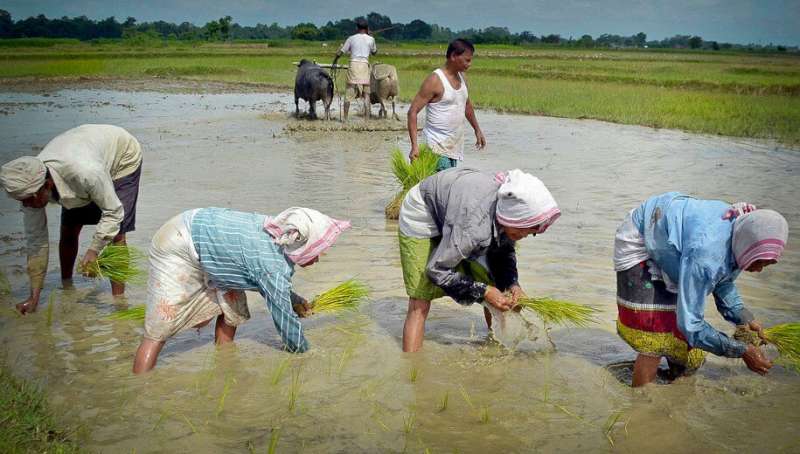India's heirloom rice can supplement infant nutrition

India's indigenous rice varieties are a rich source of fatty acids vital for undernourished infants, new research indicates.
Rice, the world's most important cereal after corn, is a staple in the Asia Pacific. About 500 million tons of rice are produced annually, with China the leading producer, followed by India and Indonesia.
According to a study published in Current Science, traditional rice varieties are cheaper and more nutritious than industrially-fortified, high-yielding varieties. However, most of them are critically endangered as they are steadily being replaced by farmers in favor of high-yielding varieties.
Debal Deb, lead author of the study and researcher at the Centre for Interdisciplinary Studies, Kolkata, says that traditional rice varieties or landraces contain essential fatty acids that promote normal brain development in infants.
"Vanishing rice varieties contain important long chain polyunsaturated fatty acids that are found in mother's milk and essential for the infant's cognitive development. They are not found in baby food formulae. We suggest that these rice varieties are a good substitute for mother's milk in case the mother is absent or not producing enough milk for the baby," Deb tells SciDev.Net.
Of the 94 folk rice varieties studied, 12 were found capable of naturally supplementing the nutritional need for important fatty acids, such as in arachidonic acid and docosahexaenoic acid, in undernourished mothers in a way that is more cost-effective and reliable than formula foods in the market.
H.S. Jat, principal scientist at Central Soil Salinity Research Institute in Karnal says there is a need to start working on nutritional security by including traditional rice varieties in the crop breeding program or fortification of widely grown high-yielding varieties of rice to reduce child malnutrition.
The Global Hunger Index, which factors in child stunting, wasting and child mortality, placed India 94th of 107 countries in 2020.
"Conservation of these neglected and vanishing landraces can help address the problem of undernutrition in infants. It is imperative to design a constructive roadmap for regional nutrition security by cultivating the nutritionally rich folk rice landraces," Jat tells SciDev.Net.
According to Deb, the late pioneer in Indian rice research H R Richharia estimated that about 150,000 indigenous varieties of rice existed in India until 1970. Deb estimates that this number is now down to about 110,000 though only about 6,000 folk rice varieties are to be found on paddies.
K.T. Chandra Mohan, professor and head of the botany department at Brennen College, in Thalassery, Kerala says that there is now growing awareness of the nutritional richness of folk rice. "As monoculture of paddy took root, hundreds of folk varieties disappeared and along with it the associated traditional knowledge," Mohan tells SciDev.Net.
Praseed Kumar Thayyil, a farmer, blames the loss of heirloom varieties to the 'green revolution' of the 1960s that depended on hybrids and agrochemicals. "Over decades this has resulted in the accumulation of toxic contaminants in the paddy fields, the gradual decimation of agro-biodiversity, dietary diversity loss and micronutrient malnutrition."
"Consumer awareness can increase the demand for folk varieties and encourage farmers to produce traditional varieties and check the trend of landraces getting extinct," Thayyil tells SciDev.Net.
More information: Sandipan Ray et al, Rare and neglected rice landraces as a source of fatty acids for undernourished infants, Current Science (2021). www.currentscience.ac.in/Volumes/121/05/0660.pdf
Provided by SciDev.Net
















